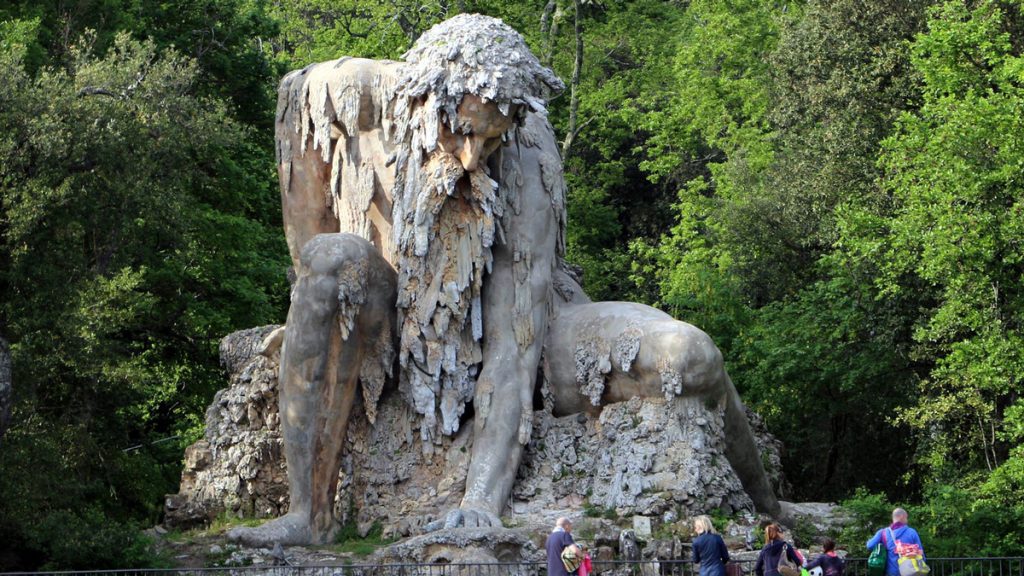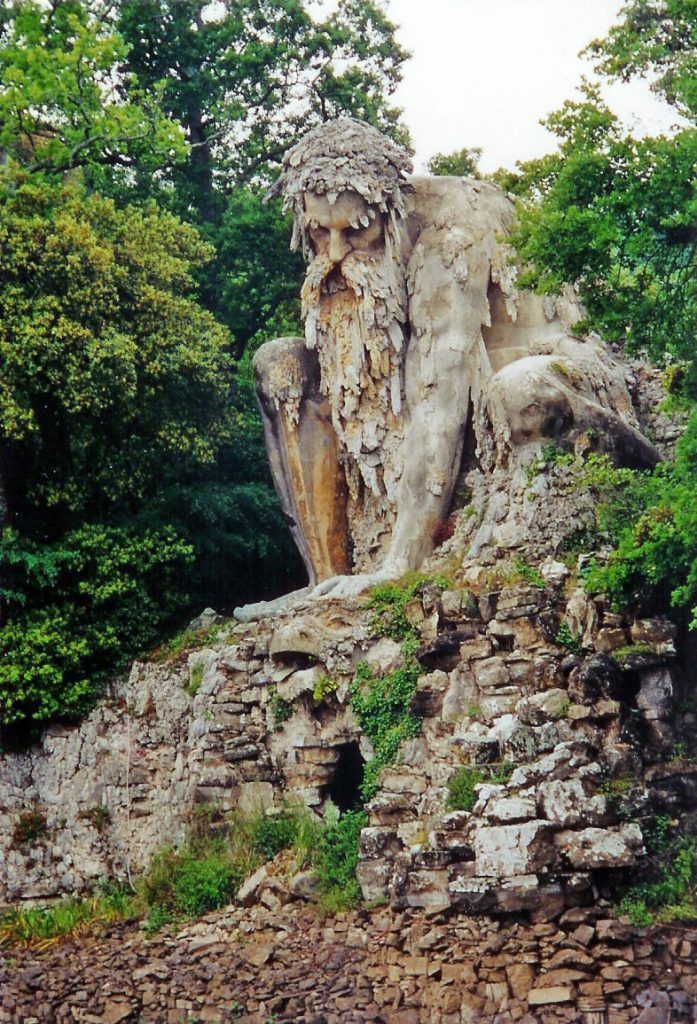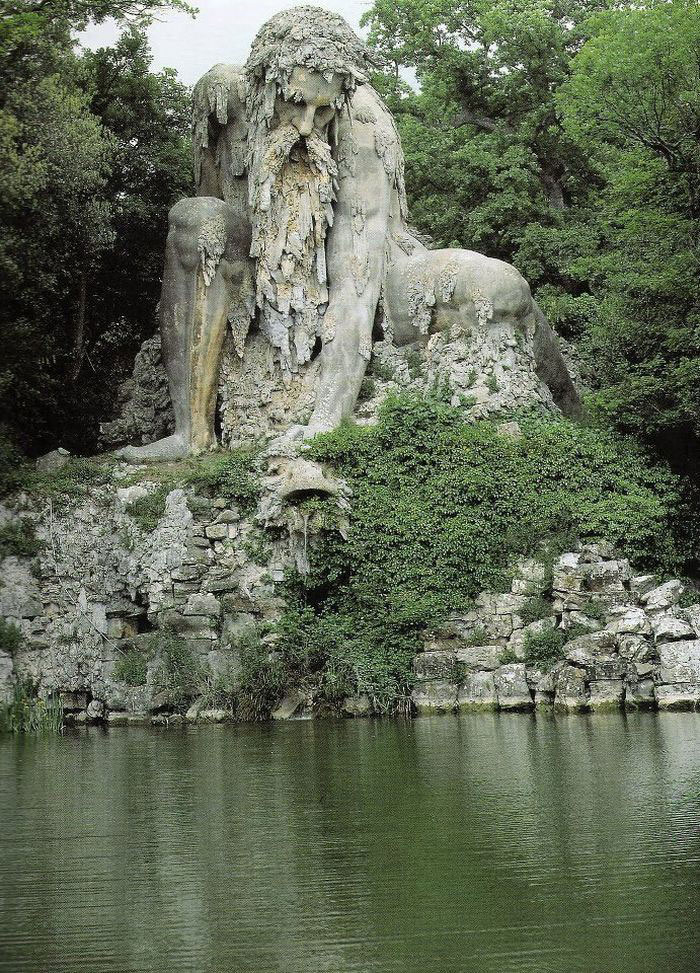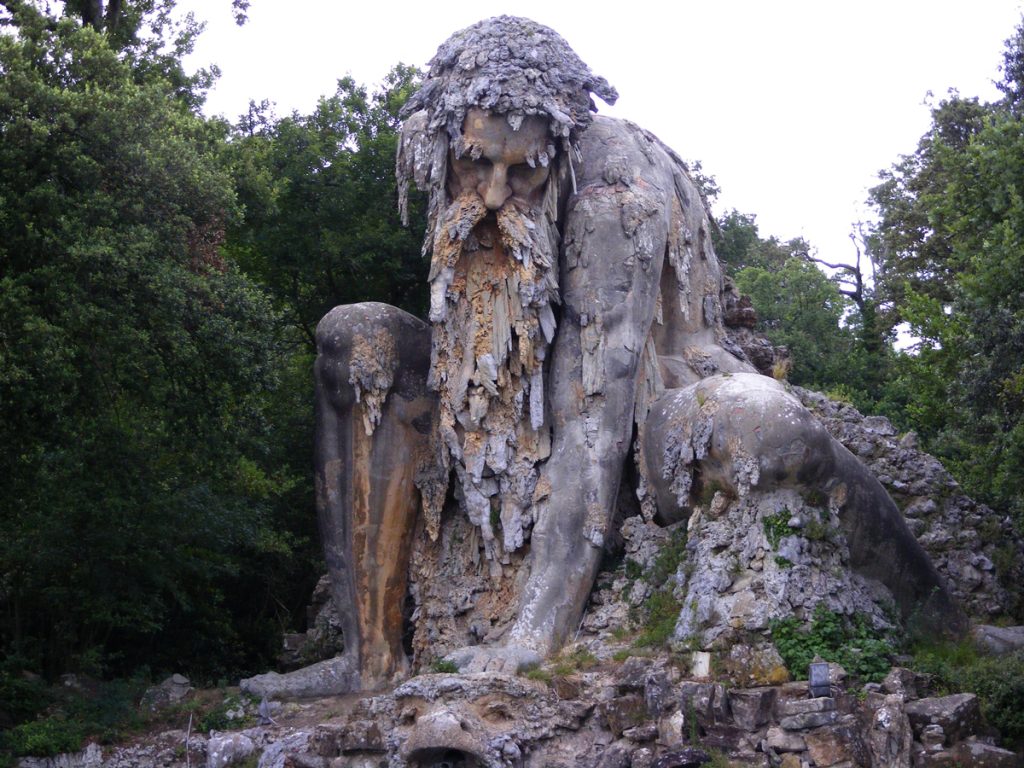Introduction

Although Colosso dell Appenino appears to be placed alone behind the pond he guards, he was once one of the many sculptures. Sadly, most sculptures have been destroyed or stolen. However, this red brick and stone Colosso, carved by Flemish sculptor Giambologna, still stands almost 500 years later because it is so huge and sturdy.
This romantic park is one of the estates owned by Francesco de ‘Medici’s mistress, and Colosso was only added a few years later to guard the park and remind visitors that the connection between humans and nature is more intimate than people may imagine.
The Birth of Colosso dell Appennino
Colosso dell’Appennino, also known as Appennine Colossus, is a giant statue located in the Pratolino Park near the city of Pistoria in the Tuscany region of Italy. This statue was created by Flemish artist Giuseppe Bologna in the late 16th century (approximately 1579-1580), when Bologna worked at the Medici court in Florence.
The creation of Colosso dell’Appenino is to celebrate the banquets and pleasures of the Medici court. This statue aims to add mystery and beauty to the courtyard of the Medici family, while highlighting the connection between humans and nature.
The appearance of Colosso dell Appennino

The Colosso dell’Appenino stands at 35 feet (approximately 10.6 meters) tall and is a massive statue with stunning power. His appearance depicts an old man with a fluffy beard and a wise face. The upper body of the statue presents a texture of stone and brick, as if it was chiseled out of a mountain range. His arm stretched out, holding a small branch in one hand and reaching forward with the other hand, as if announcing a certain message.
Colosso dell’Appenino’s lower body is shaped into a cave, with his abdomen and thighs covered in grass and rock textures. The most eye-catching thing is the back of the statue, where there is a huge cave, which is actually a small house, decorated with a fireplace and a table inside. This cabin was originally designed to provide shade and rest for tourists, providing a peaceful place for park visitors.
The Symbolic Meaning of Colosso dell Appennino

The statue of Colosso dell’Appenino is not only a work of art, but also has a strong symbolic significance. This statue symbolizes the harmonious coexistence between humans and nature. The old man’s face showed wisdom and calmness, and he held a small branch in his hand, as if symbolizing the power and regeneration of life. The cave and cabin behind him symbolize a part of nature, reminding people that humans rely on the blessings of nature.
In addition, the position of Colosso dell’Appenino is also part of its symbolic significance. He is located in a beautiful park surrounded by natural landscapes, further emphasizing the close connection between humans and nature. This location allows tourists to stroll in nature while admiring this impressive statue.
Saving Colosso dell Appennino

Although many of Colosso dell’Appenino’s companion sculptures have been destroyed or stolen, this statue still stands tall. Its huge size and sturdy construction saved it from difficulty. Colosso dell’Appenino remains a tourist attraction, attracting people to appreciate this unique artwork and the symbolic significance it represents.
Epilogue
Colosso dell’Appenino is an impressive artwork, not only because of its vastness and grandeur, but also because of the symbolic significance it represents. This statue reminds us of the connection between humans and nature and calls on us to cherish the gifts of nature. Its existence adds a sense of mystery and charm to the park, attracting tourists and art enthusiasts to appreciate this unique beauty of art. Regardless of the changes of time, Colosso dell’Appenino still stands firm, guarding this beautiful nature.

